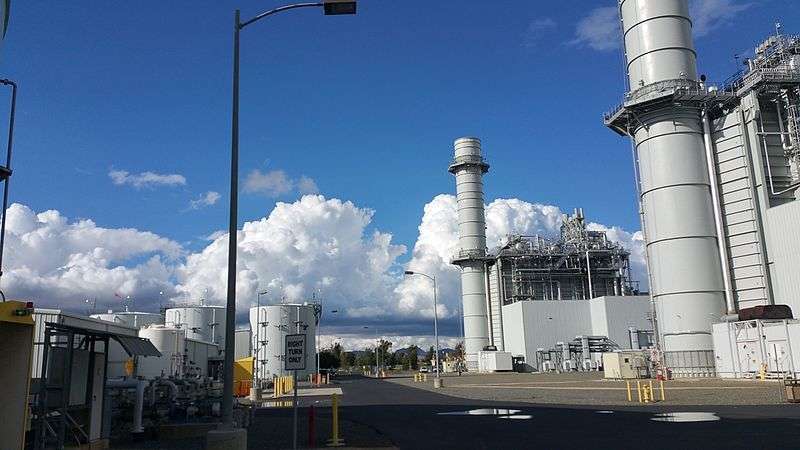
A 10-year-old natural gas plant in California gets the coal plant treatment

Late last week, General Electric told a California regulator that it would close down a 10-year-old Southern California natural gas plant because it’s no longer economically competitive in California’s energy market.
The news, first reported by Reuters, is surprising because natural gas plants tend to have 30-year lifespans on average, and natural gas is currently the cheapest fossil fuel on the market today. But the two 376 megawatt (MW) turbines at the Inland Empire Energy Center (IEEC) outside of Riverside, California, are not built to play well with the increasing amount of renewable energy on California’s grid. On top of that, renewables’ low marginal cost and ubiquity throughout the state mean that during certain times of day, they’re often the cheapest energy option.
Natural gas needs quick-start options
GE told the California Energy Commission on Thursday that the natural gas plant is “not designed for the needs of the evolving California market, which requires fast-start capabilities to satisfy peak demand periods.”
Currently, California has a lot of solar and wind power on its grid, but wind and solar power are intermittent, so if either energy source cuts out suddenly, another source of energy has to pick up the slack to meet demand. Batteries can do this instantly, but some natural gas plants can also come online relatively quickly.
Unfortunately, the 7H turbines at the IEEC are not among those that can come online quickly. The turbines take roughly 15 hours to start up and reach the required inertia to safely put electricity on the grid, much like coal plants today. This means that 7H turbines, like coal plants, work best if they’re suppling “baseload” electricity throughout the day. But this also means that these turbines have to compete with solar and wind electricity during their peak hours, a difficult prospect when solar and wind don’t have any fuel costs.
In an emailed statement to Ars, GE said, “We have made the decision to shut down operation of the Inland Empire Power Plant, which has been operating below capacity for several years, effective at the end of 2019. Inland Empire is powered by a legacy gas turbine technology that is the only 60 Hertz version of its kind globally and is uneconomical to support further.”
But it would be a mistake to think that California’s energy market is killing natural gas, despite the state’s push to eliminate greenhouse gas emissions by 2045. On the contrary, new natural gas builds continue at a rapid clip throughout the country, and a boom in natural gas has actually caused US emissions to go up. In California, natural gas use for electricity production declined dramatically between 2016 and 2017, but it jumped up significantly in 2018. That’s because rather than killing off natural gas, energy markets like California’s are making space for a more modern type of natural gas plant that can take advantage of price peaks that occur when cheap renewable energy becomes unavailable.
The newer natural gas turbine model from GE, called the 7HA, is air-cooled and can quick-start over a matter of minutes. In the past, GE has experimented with ways to bring down the fuel requirement of its gas turbines, specifically in the case of a Southern California peaker plant to which GE added a 10MW battery so it could keep the turbine spinning without burning fuel.
In the case of the IEEC plant, however, Reuters says GE is selling the site to a battery storage company.




